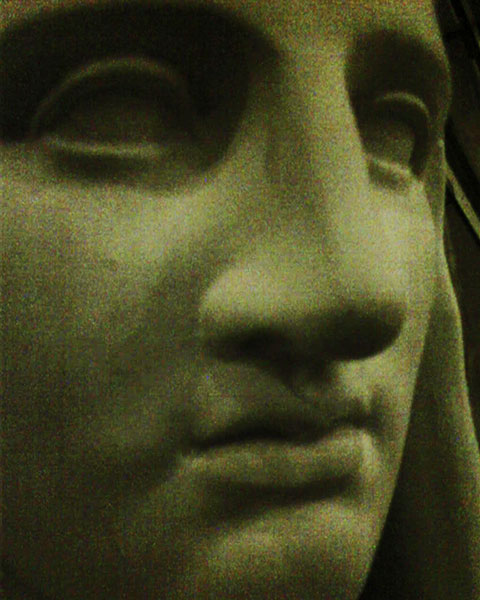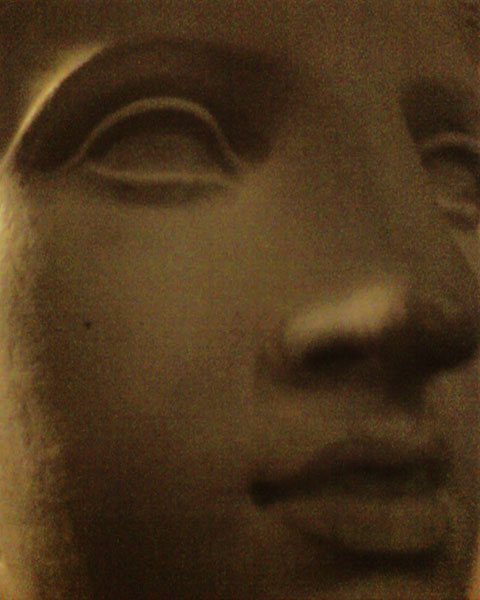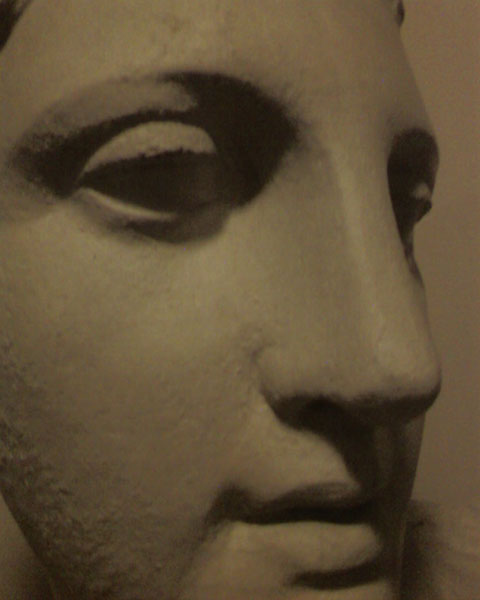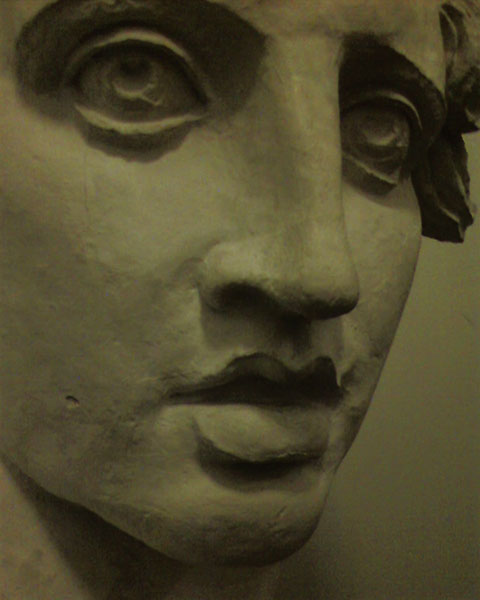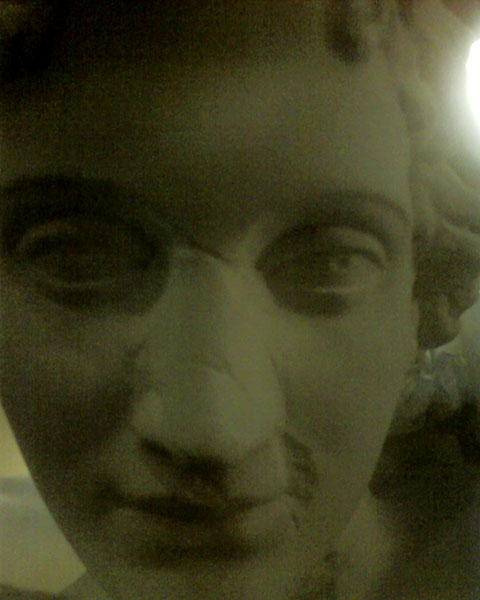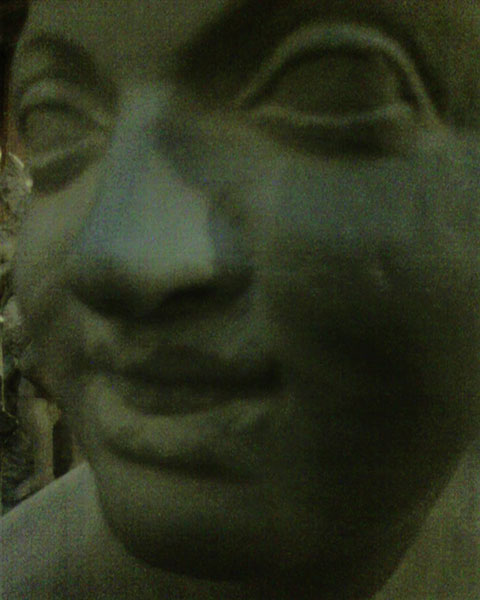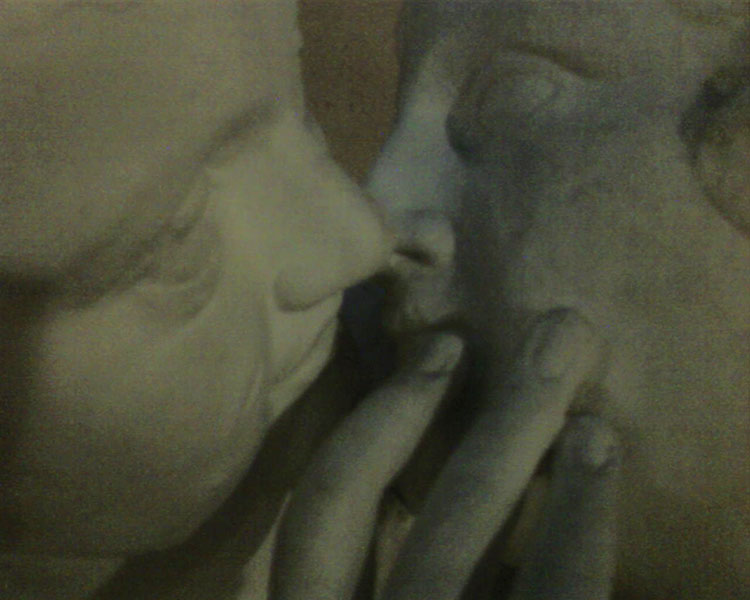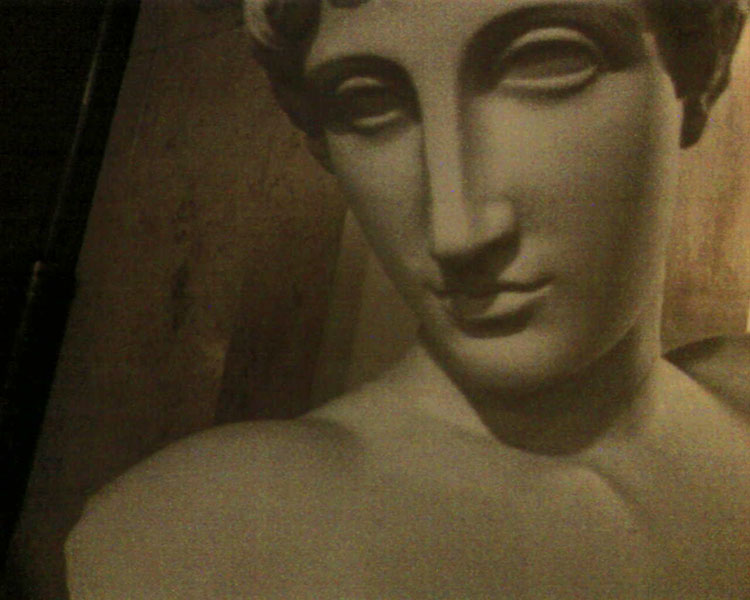Diotima
Ἔρως δ ̓ ἐστὶν ἔρως περὶ τὸ καλόν
photographs printed on recycled paper, 120 x 96 cm
ἀλλὰ τίς σοι διηγεῖτο; ἢ αὐτὸς Σωκράτης; Οὐ μὰ τὸν Δία, ἦν δ ̓ ἐγώ, ἀλλ ̓ ὅσπερ Φοίνικι· Ἀριστόδημος ἦν τις, Κυδαθηναιεύς, σμικρός, ἀνυπόδητος ἀεί·
“Wer erzählte dir davon? Sokrates selbst?” “Oh nein, bei Zeus,” sagte ich, “der, von dem auch Phönix es hat. Er hieß Aristodem, aus Kydathen, der Kleine, der immer barfuß geht. (...)”
Platon, Symposion
And Love is
Standing all around in the semi-darkness, their empty eyes look at us from the past. They are plaster casts from the era of neoclassicism and tell of the stone copies created by the Romans – after Greek sculptures. Their history leads us back to depths of the classical era, and from there, Diotima tells us about the essence of Love:
Ἔρως δ ̓ ἐστὶν ἔρως περὶ τὸ καλόν
That, at least, is what Socrates relates at the Symposium. That, at least, writes Plato, is what Aristodemos recounted, the short one who always went barefoot.
I move up close to their faces to see through their game. I make large blow-up prints to elicit from their features Diotima’s Love. Barefoot, so to speak, with the simplest photographic means, I pass on the tale, like Aristodemos, the short one.
Do Diotima’s words still ring true?
Ἔρως δ ̓ ἐστὶν ἔρως περὶ τὸ καλόν
and Love is of the beautiful
.
Und Liebe ist
Ringsum stehen sie im Halbdunkel. Sie blicken mit leeren Augen aus der Vergangenheit. Es sind Gipsabgüsse des Klassizissmus. Sie erzählen von den steinernen Kopien, die die Römer fertigten – nach griechischen Vorbildern. Tief in die Antike führt uns ihre Geschichte und von dort berichtet Diotima über das Wesen des Eros:
Ἔρως δ ̓ ἐστὶν ἔρως περὶ τὸ καλόν
So wenigstens behauptet es Sokrates beim Symposion. So wenigstens hat es, schreibt Platon, Aristodemos erzählt, der Kleine, der immer barfuß geht.
Ganz nahe rücke ich ihren Gesichtern, um den Gipsen auf die Schliche zu kommen. Übergroß drucke ich die Aufnahmen, um ihren Gesichtern den Eros Diotimas zu entlocken. Barfuß quasi, mit einfachsten fotografischen Mitteln, trage ich wie Aristodemos der Kleine die Geschichte weiter.
Stimmt es noch, was Diotima behauptet?
Ἔρως δ ̓ ἐστὶν ἔρως περὶ τὸ καλόν
und Eros ist Liebe und Trieb zum Schönen
contact
Christof RehmPavillon am Berghof
Bergstrasse 12
86199 Augsburg
mail@christof-rehm.de
www.christof-rehm.de

